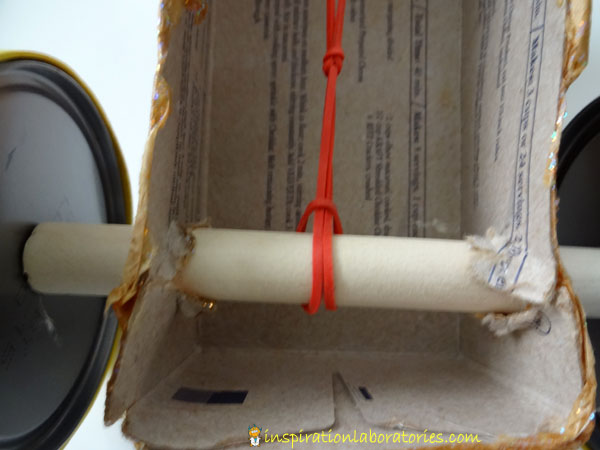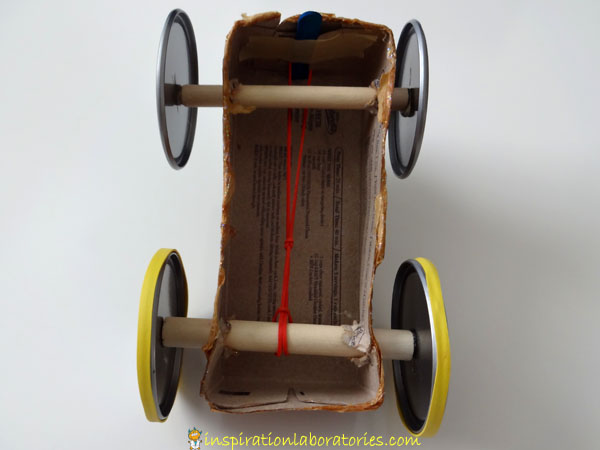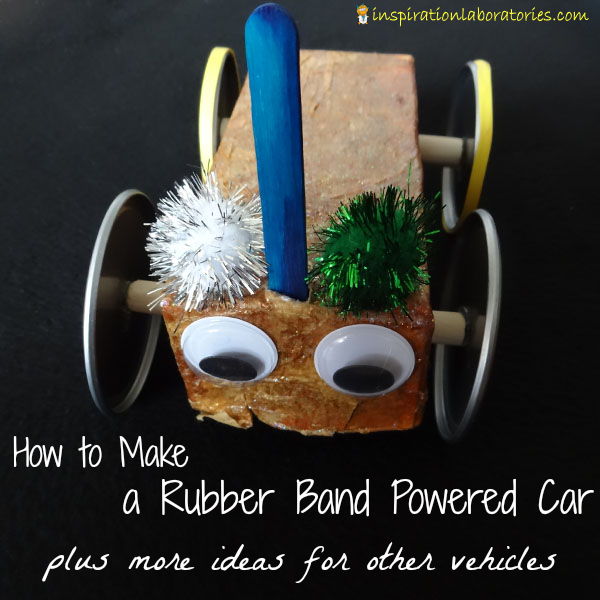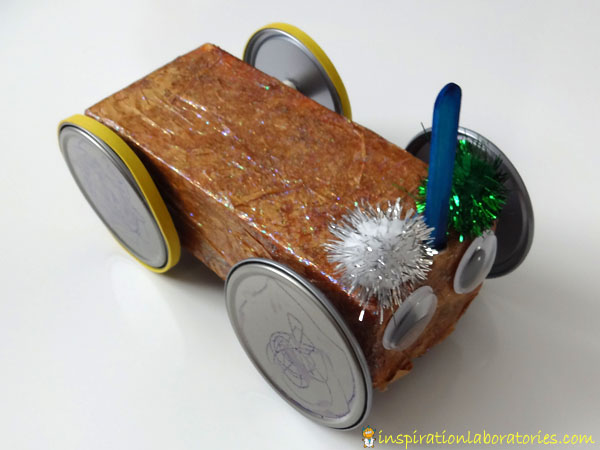Challenge and Discover: Make a Vehicle
Welcome to the 3rd Challenge and Discover – our monthly science challenge link up co-hosted with Science Sparks. Thanks so much to everyone that linked up to last month’s kitchen chemistry challenge. This month’s challenge is vehicles. We are challenging you to make a vehicle with your kids. Learn how to make a rubber powered car and see more ideas for building vehicles on our blogs and in our Science at Home video series.
How to Make a Rubber Band Powered Car
Making a rubber band powered car was a little bit of trial and error for us. In the end, it turned out pretty well. Here’s how you can make one with your kids.
Materials:
- car body {open box, cardboard tube, or piece of cardboard.
- axles {dowel rods, straws, etc.}
- wheels {juice can lids, milk caps, cardboard circles, etc.}
- rubberbands {you’ll need several}
- craft stick {or something similar to hold the rubberband}
- tape
- scissors/nail/drill {a way to cut the cardboard}
- glue
- decorations {tissue paper, Mod Podge, paint, markers, pom poms, googly eyes, etc.}
Instructions:
- Decide on a design for your car. You basically have 3 options:
- box car – use a box lid or cut part of a box off so you can access the axles
- cardboard tube – cut to the length you want {the rest of my directions should work for this body type}
- flat piece of cardboard {you’ll need to play with this one a bit to make it work – my directions don’t cover everything that’s needed}
- Cut holes for your axles. I used a nail to make the holes. Be sure to measure and mark where you want the axles to go. Make the hole in the cardboard slightly larger than the axle to reduce friction. For our axles, I essentially used dowel rods. They were actually sponge brush handles. {Aiden tore the sponges off.}
- Decorate the body of the car. We covered our car in gold tissue paper and sparkle Mod Podge.
- Make sure the axles still fit through the holes in the body of the car after decorating. Adjust accordingly.
- Attach your wheels to the axles {while the axles are in the car}. We used juice can lids for our wheels. Gluing two juice can lids together for the back wheels made the car work better. I used hot glue, but in hind site a stronger glue would probably work better. Aiden has broken the wheels off of the car several times and I’ve had to reglue them.
- Wrap the rubber band around the rear axle. Depending on the length of your car, you may need two rubber bands. {We needed two.}

- Attach the rubber band to a fixed position at the front of the car. We used a craft stick for this. I cut a slit in the top of the car. Aiden liked how the craft stick looked, so I didn’t cut it down.

- For added traction, place rubber bands around the wheels.
- Finish decorating your car. Aiden wanted to add pom poms and googly eyes.
- Pull the car back and let it go. {If your car doesn’t go, try pushing the car forward and releasing it. You may have the rubber band wrapped around the wrong way. Play with it and have fun tweaking it.}
See the rubber band powered car in action in the video below.
Science at Home Video Series
Watch the video to see examples of other powered vehicles.
Check out the Science at Home post for more information and links to the other vehicle ideas.
Challenge and Discover: Make a Vehicle
This month’s challenge is to make a vehicle with your kids. Build something that your child can push – either on the floor or in water. It doesn’t have to move on its own. If you want to try the added challenge of making a powered vehicle, that’s a bonus.
Link up posts about vehicles you have built with your kids. By linking up, you are giving us permission to grab one picture and feature your projects on our blogs and social media sites. We’d love for you to grab a button and add it to your post.

<div align="center"><a href="https://inspirationlaboratories.com/" title="Inspiration Laboratories" target="_blank"><img src="https://farm8.staticflickr.com/7281/8714558209_754cc3451b_m.jpg" alt="Inspiration Laboratories" style="border:none;" /></a></div>
You can also share photos of your activities on our Facebook pages or in the Science for Kids community on Google+.
Link up your vehicle projects starting today.
Thanks for sharing your vehicle creations!




Leave a Reply